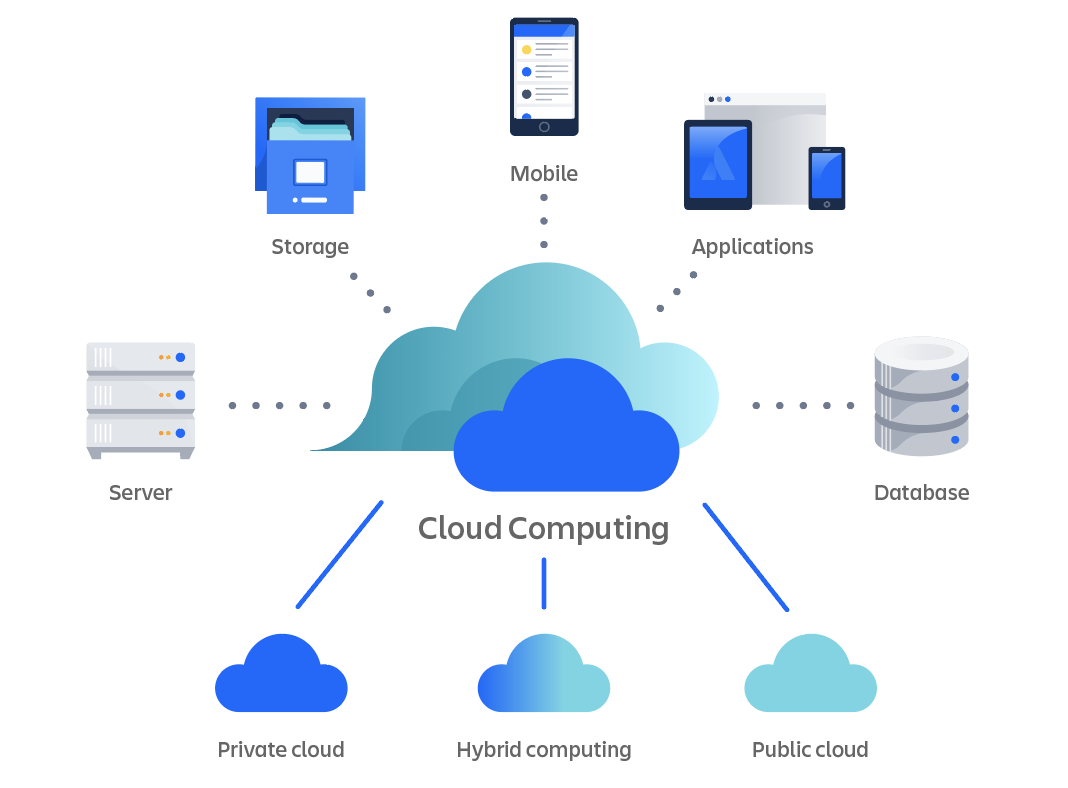Simplify Your Framework With Cloud Services
As services browse the ever-evolving landscape of innovation and information administration, the role of cloud services in streamlining framework has actually ended up being significantly prominent. How can companies efficiently navigate this transition and absolutely unlock the capacity of cloud services for simplifying their framework?
Benefits of Cloud Provider
Cloud solutions provide a structured method to managing IT infrastructure, supplying organizations with scalability, cost-efficiency, and versatility. Among the key benefits of cloud services is the scalability they provide. Services can quickly scale their sources up or down based on demand, ensuring they just spend for what they utilize. This flexibility is particularly advantageous for organizations with varying needs or those experiencing development.
In addition, cloud services eliminate the need for companies to buy costly software and hardware. This cost-efficiency is a substantial benefit, particularly for tiny to medium-sized business wanting to minimize in advance prices. By utilizing cloud solutions, organizations can access high-grade IT sources without the substantial cost related to typical facilities configurations.
In addition, cloud solutions give services with the adaptability to access their data and applications from anywhere with a net link. This degree of ease of access enhances partnership amongst teams, makes it possible for remote job, and raises overall productivity. The adaptability used by cloud solutions encourages organizations to adapt swiftly to transforming market conditions and client demands.
Price Savings and Scalability
Along with the operational benefits highlighted earlier, the integration of cloud solutions right into a company's infrastructure comes up with significant cost financial savings and boosted scalability. Cloud solutions supply a pay-as-you-go version, enabling companies to range sources up or down based on present needs, consequently preventing the costs connected with maintaining excess capability. This flexibility makes it possible for companies to adapt swiftly to varying demands without incurring unneeded expenses.
Furthermore, cloud solutions eliminate the need for upfront financial investments in software and hardware, decreasing capital investment. General expenses are also decreased as firms no more require to manage and preserve physical servers, causing reduced power usage and IT staffing costs. In addition, cloud solutions offer automated updates and upkeep, ensuring that the infrastructure continues to be safe and secure and up-to-date without requiring hands-on treatments.
Boosted Protection Steps
Implementing rigid protection steps is vital when integrating cloud services right into a firm's framework to make certain and guard sensitive information compliance with industry policies. Cloud solution suppliers provide improved security functions such as information encryption, firewall software defense, and multi-factor authentication to minimize cybersecurity dangers.
Furthermore, routine safety and security audits and compliance evaluations aid identify susceptabilities and guarantee adherence to industry criteria. Business can also gain from features like automated protection updates and real-time hazard surveillance supplied by cloud provider. By focusing on safety measures and remaining proactive in dealing with prospective threats, services can confidently take advantage of cloud services while shielding their important information from unauthorized gain access to or breaches.
Transitioning to Cloud Facilities
To successfully incorporate cloud solutions right into a company's facilities, an organized method that resolves the shift in the direction of cloud-based services is vital. Transitioning to shadow infrastructure includes mindful preparation and implementation to guarantee a smooth movement procedure. The primary step is to assess the present facilities and determine which systems and applications are ideal for migration to the cloud. This examination needs to take into consideration factors such as data sensitivity, conformity requirements, and performance requirements.
When the analysis is full, a movement approach need to be established. This approach must detail the timeline, sources, and obligations for relocating each part to the cloud. It is vital to interact this strategy plainly to all stakeholders to make certain placement and lessen disruptions throughout the change.
During the migration procedure, screening and monitoring are essential to identify and resolve any type of problems promptly. Normal checkpoints must be developed to track progression and make needed adjustments. In addition, training for workers on making use of cloud solutions should be given to make certain an effective shift and maximize the advantages of the new facilities.
Finest Practices for Cloud Fostering
Successful fostering investigate this site of cloud services rests on the tactical placement of service purposes with technological capabilities and business preparedness. To guarantee a smooth change to the cloud, organizations must start by carrying out a thorough assessment of their existing infrastructure and determining which work are best matched for cloud migration. It is crucial to include vital stakeholders from different divisions in the decision-making procedure to gain buy-in and resolve any type of worries at an early stage.
An additional best method for cloud adoption is to focus on security and compliance. Organizations needs to carefully assess the protection actions provided by cloud solution suppliers and ensure that their data is secured according to market standards and regulatory demands. Applying durable information encryption, access controls, and routine safety audits can help alleviate threats related to cloud fostering.

Final Thought

As businesses navigate the ever-evolving landscape of technology and information management, the function of cloud solutions in simplifying facilities has become progressively noticeable - universal cloud Service. How can companies effectively navigate this shift and absolutely open the possibility of cloud services for simplifying their infrastructure?
Cloud solutions offer a structured method to managing IT facilities, supplying organizations with cost-efficiency, scalability, and adaptability. By using cloud services, businesses can access top notch IT sources without the large rate tag linked with conventional infrastructure configurations.
To make sure a smooth change to the cloud, companies need to begin by performing a detailed analysis of their existing facilities and determining which why not try these out workloads are best useful content matched for cloud movement.
Comments on “LinkDaddy Cloud Services Decoded: Expert Insights right into Universal Cloud Service Advancements”